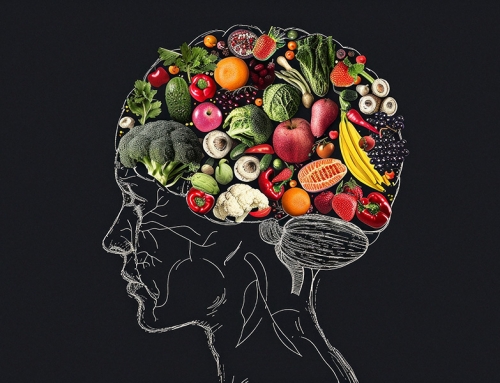Introduction
Food security is a growing concern worldwide. Barrett (2010) notes that approaches to measurement follow the four major “pillars” of food security—availability, access, utilization, and stability (1).
Why there is a need to measure food insecurity?
Measures of food insecurity are important for early warning, assessment of the current and prospective status of at-risk populations, and for monitoring and evaluating specific programs and policies strategies. Food insecurity can lead to serious consequences. Therefore, there is a to understand ways in which researchers investigate food insecurity (2). Actions must be guided by reliable and accurate information as to who is food insecure, where, when, and why so that scarce resources can be utilized effectively without aby wastage. This requires improved measurement of food insecurity and its etiology and greater attention to key institutional and policy lessons learned (1).
Current Approaches to Measure Food Insecurity
Five commonly used methods can be used to assess food security (3):
- the Food and Agriculture Organization (FAO) method for estimating calories available per capita at the national level;
- household income and expenditure surveys;
- individual’s dietary intake;
- anthropometry; and
- experience-based food insecurity measurement scales.
Various single-item and multi-item tools have been developed to determine the prevalence of food insecurity at a population level and the individual level.
Below is a brief description of the common tools used to assess food insecurity:
- Household Food Security Survey Module (HFSSM): It measures household food insecurity. It is an eighteen-item questionnaire that can be used with a 12-month reference period. It assesses the dimension of food access through financial resources. Ten of the 18 questions are specific to the experiences of adults in the household while eight are specific to the experiences of children under the age of 18 years in the household (4).
- Food Insecurity Experience Scale (FIES): It is an experience-based measure of household or individual food security. It consists of eight questions regarding people’s access to adequate food and can be easily integrated into various types of population surveys. The survey focuses on self-reported food-related behaviors and experiences associated with increasing difficulties in accessing food due to resource constraints. It can be administered with either a 1-month or 12-month recall period (5).
- Household Hunger Scale(HHS): It is a simple, new indicator to assess household hunger in food-insecure areas. It consists of three questions with a reference period of 4 weeks. The scale allows for estimating the percent of households affected by three different severities of household hunger (6).
- Global Hunger Index (GHI): It aims to measure “hunger” using 3 equally weighted indicators: a) undernourishment b) child underweight and c) child mortality (7).
- Global Food Security Index (GFSI):It is a multi-dimensional tool for assessing country-level trends in food security. The index uses a total of 30 indicators within 3 domains of food security, affordability, availability, and quality and safety (8).
- Food Consumption Score (FCS):It combines data on dietary diversity and food frequency using 7-day recall data. The respondent reports on the frequency of household consumption of 8 food groups (9).
- Dietary Diversity Scores (DDS): Dietary diversity is also one of the indicators of choice for measuring household food access. Household dietary diversity score (HDDS) is a qualitative measure of food consumption that reflects household access to a variety of foods. Similar diet diversity scores (DDSs) have been developed to assess the nutritional quality of individual diets and for women (10).
- The Coping Strategies Index (CSI): Uses a participatory approach to assess food security. It consists of questions regarding how households cope with food shortfalls to construct a numeric score. The index can be used to target food aid, monitor the impact of food aid, and estimate the long-term changes in food security (11).

Conclusions
A systematic review conducted in 2016 concluded that it is a necessity for a valid and reliable instrument that assesses four dimensions of food insecurity at both the household and individual levels (13). The diversity of food security measurement tools currently available may not also provide a clear understanding of how the measures differ in their conceptualizations of food security and for what purpose a given tool may best be used. It is important to select the appropriate tool to measure food insecurity to avoid collecting information that is not relevant, measuring an unintended domain of food security; wastage of resources (14). Besides, rigorous monitoring and repeated assessment of food security at all levels to track the various food security indicators. Addressing all the dimensions of food security with new and existing applications of science, technology, and innovation across the food system is needed to achieve the goal of zero hunger by 2030 (15).
Way Forward
The diverse food insecurity tools and their respective indicators serve the purpose of information required at national, household, and individual levels that facilitate monitoring the progress towards achieving the national level targets, Sustainable Development Goals, and other yardsticks for monitoring the progress of macro and micro-level milestones. Yet, the availability of diverse tools to measure food insecurity conflicts with the contextual and cultural applicability and appropriateness. Challenges still exist in addressing and alleviating food insecurity worldwide. A convergent approach that takes into cognizance the diverse variables for measuring food insecurity may be more appropriate and effective and would further help to evaluate needs for attaining the food security targets. There is a need for routine monitoring of national household and individual food insecurity, tracking how the problem changes over time, and identifying at-risk groups to develop evidence-based strategies, interventions and policies. Standardized, cross-cultural, validated, reliable, and comparable measurement tools are vital to assess the prevalence of food insecurity at the state- or national level for equitable allocation of funds and to implement effective policy interventions.
Further Reading
- //www.ers.usda.gov/topics/food-nutrition-assistance/food-security-in-the-us/measurement.aspx
- //www.fantaproject.org/research/dietary-diversity-household-food-security
- //www.fantaproject.org/monitoring-and-evaluation/household-food-insecurity-access-scale-hfias
- //fns-prod.azureedge.net/sites/default/files/FSGuide.pdf
References
- Barrett CB. Measuring Food Insecurity. Science [Internet]. 2010 Feb 12 [cited 2022 Jan 24]; Available from: //www.science.org/doi/abs/10.1126/science.1182768
- McKay FH, Haines BC, Dunn M. Measuring and Understanding Food Insecurity in Australia: A Systematic Review. Int J Environ Res Public Health. 2019 Feb;16(3):476.
- Measurement and Assessment of Food Deprivation [Internet]. [cited 2022 Jan 24]. Available from: //www.fao.org/3/y4249e/y4249e00.htm
- Coleman-Jensen A, Nord M. U.S. Household Food Security Survey Module. :12.
- Food Insecurity Experience Scale | Voices of the Hungry | Food and Agriculture Organization of the United Nations [Internet]. [cited 2022 Jan 24]. Available from: //www.fao.org/in-action/voices-of-the-hungry/fies/en/
- Deitchler M, Ballard T, Swindale A, Coates J. Introducing a Simple Measure of Household Hunger for Cross-Cultural Use. :16.
- About: The Concept of the Global Hunger Index [Internet]. Global Hunger Index (GHI) – peer-reviewed annual publication designed to comprehensively measure and track hunger at the global, regional, and country levels. [cited 2022 Jan 24]. Available from: //www.globalhungerindex.org/about.html
- Global Food Security Index (GFSI) [Internet]. [cited 2022 Jan 24]. Available from: //foodsecurityindex.eiu.com/
- wfp197216.pdf [Internet]. [cited 2022 Jan 24]. Available from: //documents.wfp.org/stellent/groups/public/documents/manual_guide_proced/wfp197216.pdf
- Household Dietary Diversity [Internet]. Food and Agriculture Organization of the United Nations. [cited 2022 Jan 24]. Available from: //www.fao.org/nutrition/assessment/tools/household-dietary-diversity/en/
- Caldwell R. Daniel Maxwell Associate Professor, Feinstein International Center, Tufts University. :52.
- Coates J, Swindale A, Bilinsky P. Household Food Insecurity Access Scale (HFIAS) for Measurement of Food Access: Indicator Guide: Version 3: (576842013-001) [Internet]. American Psychological Association; 2007 [cited 2022 Jan 24]. Available from: //doi.apa.org/get-pe-doi.cfm?doi=10.1037/e576842013-001
- Gundersen C, Engelhard EE, Crumbaugh AS, Seligman HK. Brief assessment of food insecurity accurately identifies high-risk US adults. Public Health Nutr. 2017 Jun;20(8):1367–71.
- Jones AD, Ngure FM, Pelto G, Young SL. What Are We Assessing When We Measure Food Security? A Compendium and Review of Current Metrics. Adv Nutr. 2013 Sep 1;4(5):481–505.
- The role of science, technology and innovation in ensuring food security by 2030. :55.
Affiliations
- Graduate School of Public Health and Health Policy, City University of New York, New York, NY, United States
- Foundation of Healthcare technologies Society, New Delhi, India





Leave A Comment